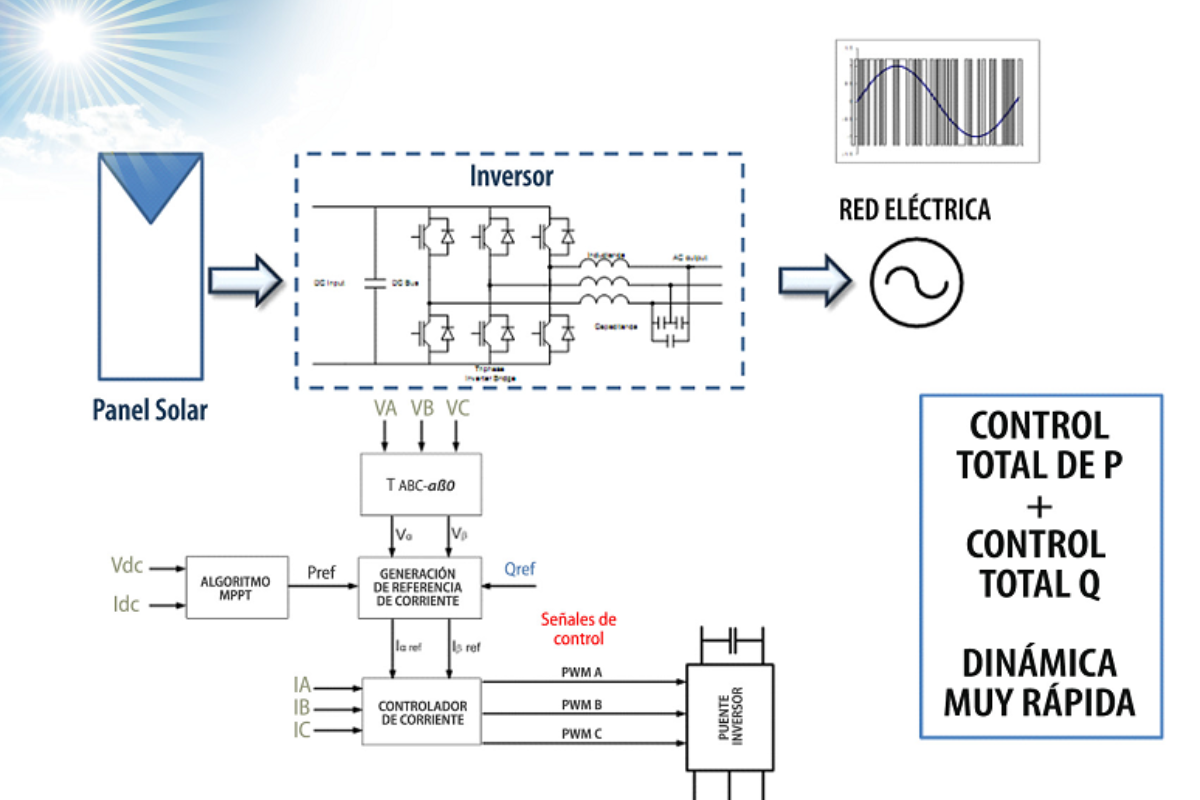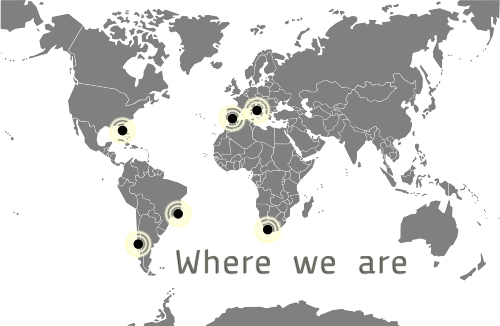Integration of RE with high levels of penetration in power electronics systems
Author: Sergio Ceballos | Title: Country Manager of Chile | Published on: ElectroIndustria
The increase of energy generation in power systems, especially in those countries with a high level of growth, forces the inclusion of Non-Conventional Renewable Energies (NCRE) as primary generation sources.

In many occasions, NCRE are criticised by the defenders of system stability and security by means of more manageable sources, but more expensive and pollutant. However, benefits of the advanced control applied to renewable generation systems (as wind and PV energy), as well as benefits of the power electronics to achieve flexible operation range in the PV plant and the advantages that the system operator can take from this flexibility, are not even taken into consideration. For instance, dynamic bars voltage regulation and the possible regulation of frequency regulation, either due to active power reduction or due to extra power supply, using battery energy storage systems (BESS).
Traditionally, RE generators have had bad reputation with regard to their behaviour facing grid failures. This bad reputation is related to the use of less developed control techniques and with the use of old technologies for wind energy generation, as, for example, induction generators directly connected to the grid. Nowadays, technology to reduce this kind of problems has been developed. It achieves that NCRE generators emulate the transient response of a synchronous generator managed by any conventional energy source. The current power electronics, together with the advanced control techniques for an optimal and efficient conversion used to connect solar PV plants or wind turbines to the system, allows an almost total control of active and reactive power, as well as the voltage in the point of interconnection. The new generations of PV inverters allow the injection of reactive power, which is useful to maintain system stability and is available to be used by grid operators even if the plant is not operating. The same applies for high power wind generators connected to the grid.
These technologies are already used in systems with a very high renewable energies penetration level, with or without interconnection, showing that a safe electric grid management from the voltage grid point of view is possible.
Frequency regulation has also to be taken into consideration when evaluating the behaviour of NCRE generators. Some years ago, PV inverters did not include this capacity. Nevertheless, the necessities of some systems have forced the revision of grid connection regulations. Nowadays, there are grid connection converters that react against frequency variations, reducing the power generation in case of over-frequency. Both wind and PV generators are able, in addition, to reduce the power curtailment following the system operators' guidelines.
Nevertheless, the integration of intermittent sources in an unstable system could provide, surpassing some limits, an energy reserve available if a drop in the production of renewable energy is produced. Conventional generators need a minimum lapse of time before giving the required power, so the transitory supply is carried out by batteries. They are capable of giving or absorbing power from the grid in order to stabilize the difference between power generation and power demand of the system. Thus, it avoids possible disconnections produced by frequency out of the limit.
Usually, RE generator systems have been criticised because they reduce the inertia of the system, that is, the minor capacity to support generation falls, due to disconnection of an equipment that is giving significant power to the system, failures that avoid the generation, etc. Those problems produce a transitory fall of the frequency system until the automatic control of the generation of the station solve them. It is always desirable that the system provides its own energy coming from the kinetic energy of the generators connected to the system.
With regard to the wind generation, this transitory power supply to control the power injection to the grid has not been taken into consideration before. However, nowadays there already exist commercial solutions that resolve this problem and use the kinetic energy from the turbine rotors. This supply is enough to emulate the operation of conventional synchronous generators, always if control techniques are applied correctly. Therefore, non-operation of conventional generators during key generation hours is not a problem anymore in terms of system inertia losses: the dynamic stability is not compromised.
Operation in island is another problem usually attributed to renewable energies as a result of its incapacity to impose system frequency and voltage. Operation in island is an undesirable situation, especially if the distributed energy is connected to distribution grids with low monitoring. Effects of opening switches in a distribution line where there are charges and generators are a considerable risk for grid operators' and devices' security. During the first years of massive renewables integration, several problems arose related to anti-islanding protections.
Nevertheless, technical progress and the emergence of new regulations worldwide have made a quick islanding detection possible by using power electronics as well as active and reactive power control in grid-connected PV inverters. Positive feedback algorithms producing controlled disturbances in the system achieve a significant reduction of detection and action time. This guarantees an operation with acceptable security levels.
To sum up, the use of advanced control and power electronics present in the RE generation allows a flexible power system that takes advantage of the transport capacity of its lines. The inclusion of communications can increase significantly the limit of penetration of renewable energies, without compromising the security, to make it more sustainable and competitive in a short time.



